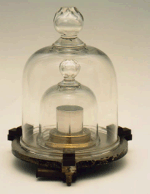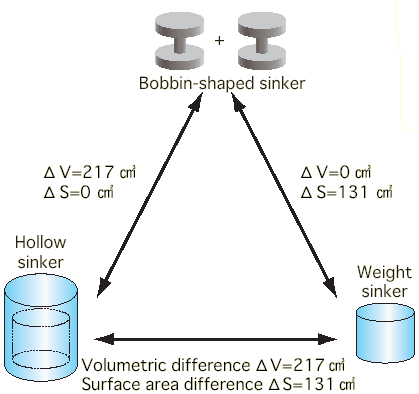- Sorry... We are working on renewing information on this page. Thank you for your patience. -
Standards for the SI Base Units - Mass
The Evolution of the Definition of the Kilogram
The unit of mass, the kilogram (kg), was originally defined as the mass of distilled water at its maximum density in a cube measuring 10 cm per side. In 1889, it was replaced by the mass of Prototype Kilogram, a cylinder measuring about 39 mm in both diameter and height made of an ally of 90% platinum and 10% iridium.
Until now, the Japanese mass standard has been established by the Japanese copy of Prototype Kilogram, which is stored at NMIJ. Made in 1890, this Japanese prototype was produced concurrently with the establishment of Prototype Kilogram and is of the same shape and material.
Prototype Kilogram
The mass of the Japanese copy of Prototype Kilogram is calibrated against Prototype Kilogram kept at the International Bureau of Weights and Measures near Paris, France, at intervals of about 30 years, and its equivalency to Prototype Kilogram is confirmed. The most recent measurement of the Japanese copy, taken in 1993, showed that it had changed by only 7 µg over a period of 100 years.

Road to Higher Accuracy
Femtosecond ultrashort pulses are considered to be a group of many modes arranged at equal intervals on the frequency axis and are called a "comb" due to their resemblance to the teeth of a comb. This is, in a way, "ruler of optical frequency".

